My very first visit to Tokyo, Japan was at the age of 18. I stayed for six weeks to attend a language school. It gave me my first opportunity to get acquainted with this fantastic metropolis.
During my ten months of study abroad in Osaka, I came back to Tokyo with my parents, to show them around because I knew what to do in Tokyo. And from 2015 for more than 3 years I lived right in the center of Tokyo.
You could say I know quite a bit about Tokyo.
I have put together this 5 days in Tokyo itinerary for first-time travelers to Japan. For people who want to get to know the modern but also the more traditional parts during their trip to tokyo.
There is always more to explore and 5 days in Tokyo (or even one week in Tokyo) will never be enough to see it all. I am not sure I have seen it all in my more than 3 years there. But it is definitely long enough to find out what to do in Tokyo.
No matter if it is culture, history, food or technology that you are after, I have Everything you need to know about your visit to Tokyo in my 5-day itinerary.
Coming your way in this post - click to expand ->
Note – Please know, some of the external links on this page are affiliate links, this means that if you purchase after following one, I make a small commission from the sale at no additional cost to yourself.
My 5 day Tokyo itinerary overview
- Day 1 – Diving right in at Harajaku, Meiji Shrine, Yoyogi Park, Omotesando & Shibuya
- Day 2 – Where old meets new, Ginza, Tokyo Station, Imperial Palace, Nihombashi & Anime in Akihabara
- Day 3 – Shopping and views in Asakusa, Tokyo Skytree, Ueno, Nippori & Onsen
- Day 4 – Exploring a bit further with a Kamakura day trip
- Day 5 – History and culture in Ryogoku & Korakuen
Mapping it out
Day 1 – Harajaku, Meiji Shrine, Yoyogi Park, Omotesando, and Shibuya
Sweets and souvenirs at Harajuku
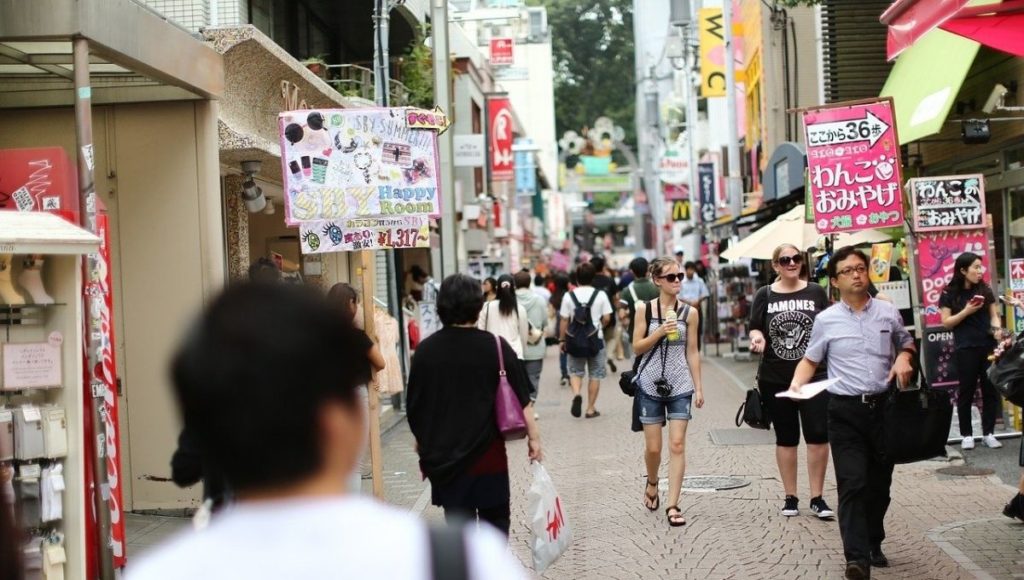
Let’s start your 5 day itinerary with one of the craziest, young, “in” districts of Tokyo: Harajuku. I recommend you arrive at around 10 a.m. at Harajuku Station. Take the Takeshita Dori Street exit, and you will stand right in front of Takeshita Dori street. This street features many favorite shops with especially high school kids where they can buy clothing, accessories and make-up.
You will also find that they have many shops with the most amazing looking (and tasting) sweets in all of Japan. If you want to try the Harajuku Crepes or the rainbow colored cotton candy from the Totti Candy Factory, it is best to buy it early in the day because the lines can get quite long especially on weekends.
I know it is only day one of your 5 days in Tokyo but the 100 Yen Daiso shop is the biggest 100 Yen shop in Japan and the perfect place to get some cheap souvenirs.
Make a wish at Meiji Jingu Shrine
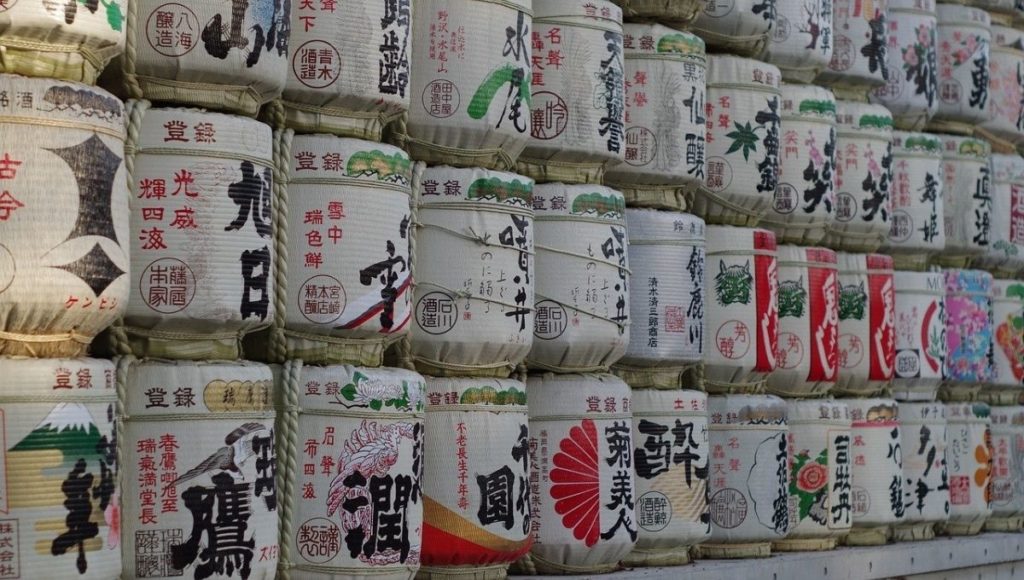
After you have seen your fill in Harajuku there are other Tokyo attractions close by. I recommend a visit to one of the most important Shinto Shrines in Tokyo which is on every itinerary – The Meiji Jingu Shrine.
From the massive wooden Torii gate, it is a beautiful walk to the main shrine through the park, and over little bridges. When you enter the Meiji Jingu Shrine, don’t forget to wash your hands. This is to ceremonially purify your body.
On most weekends you will be able to see many wedding ceremonies taking place at the shrine, and if you are lucky, you will even manage to take a picture or two of the bride and groom dressed in their beautiful traditional Kimono.
When you want to make your wish, throw a coin (best is a 50 yen coin with the hole in the middle) into the collection box. In case there is a bell you should now ring it to wake the gods. Bow twice, make your wish, clap twice and bow once more to conclude.
People watching at Yoyogi Park
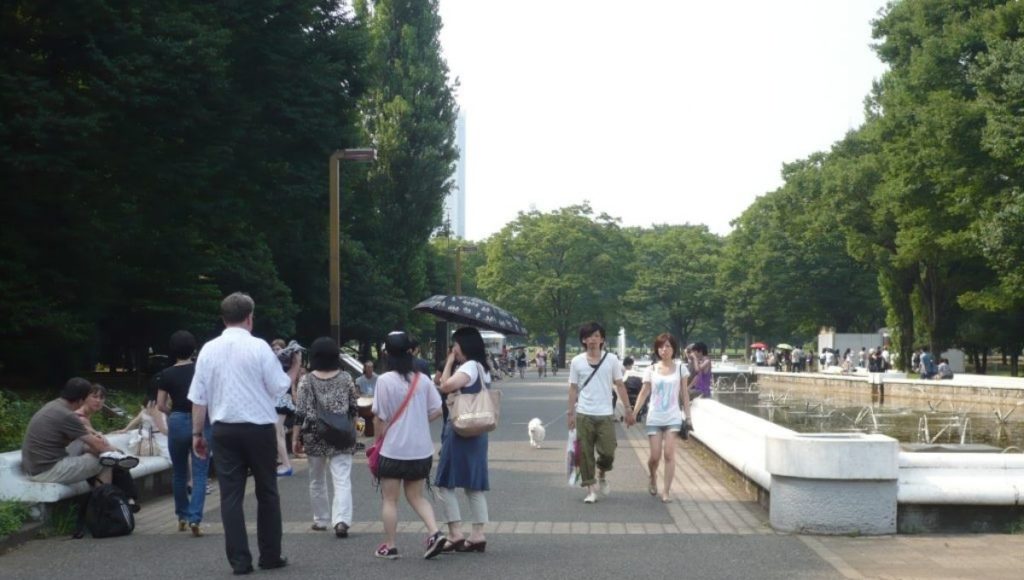
It’s your first day in Tokyo, and it is time to see what the Japanese are up to in their free time. For this reason, a visit to Yoyogi Park is in order.
Many Japanese spent their free time here, walking their dogs (or other pets) meeting to have a picnic or to practice all kinds of sports or other cultural activities like acting or dancing.
It is a great place to learn about Japanese culture and have some time to relax. How about buying a soft serve ice cream at the entrance to the park and sitting down on one of the benches for a couple of minutes.
Window shopping in Omotesando
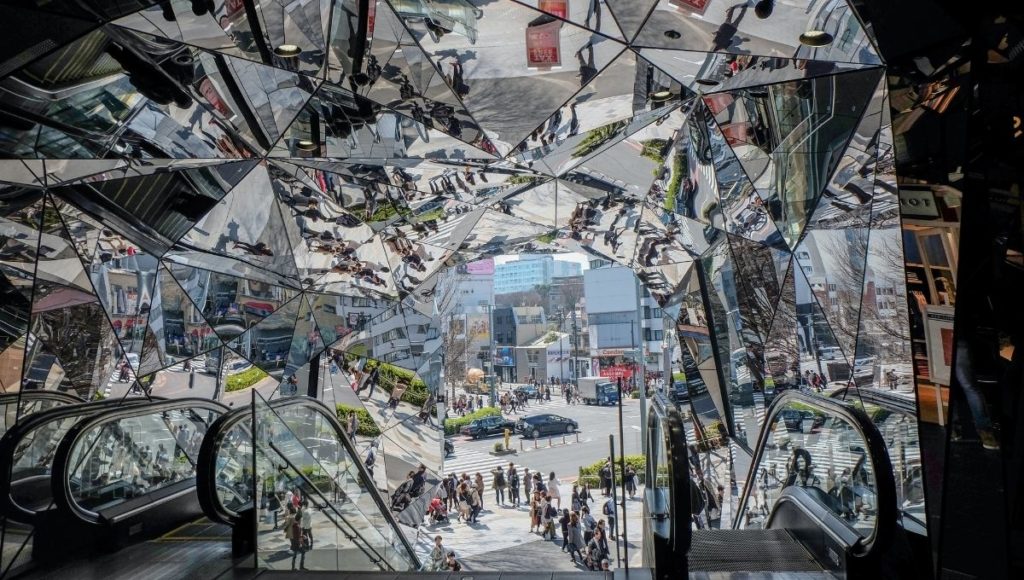
From Yoyogi Park, the next activity of your 5 day Tokyo sample itinerary is a walk along Omotesando. Many brand shops like Louis Vuitton or Burberry line the streets of Omotesando, but also the side streets are fascinating and worth exploring.
I also recommend a visit to the little condom shop Condomania for some fun souvenirs and even a visit to the top of the Tokyu Plaza Omotesando Harajuku building. From the deck, you will have a great view of Omotesando and the Harajuku area.
The scramble of Shibuya Crossing
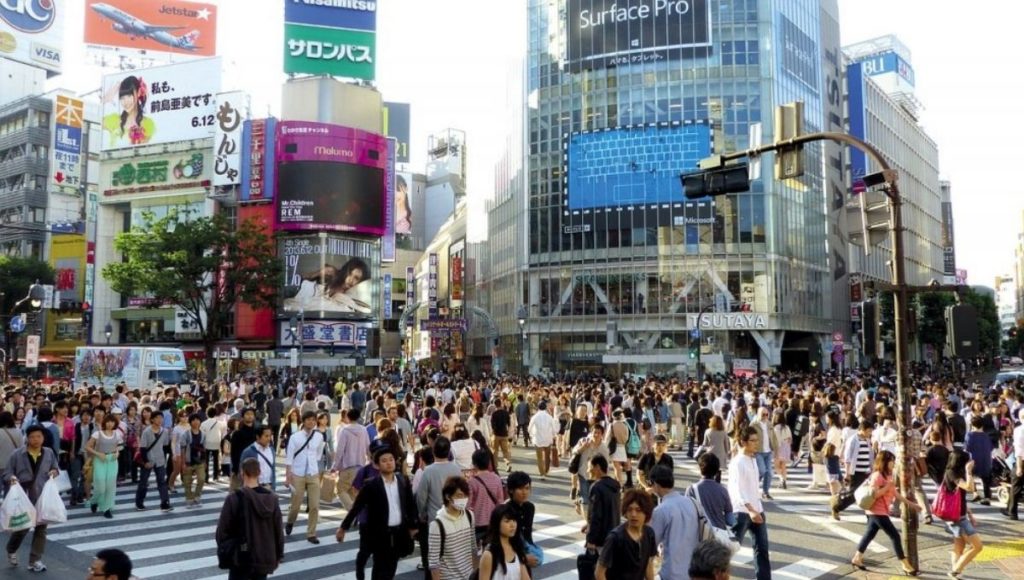
The last stop of the first day of your 5 days in Tokyo is Shibuya, one of the most popular Tokyo tourist attractions and should be on everyone’s itinerary.
It is about 1 kilometer away from Harajuku. If you don’t want to walk it might be a good idea to take the JR Yamanote Line for one station between Harajuku and Shibuya. Or alternatively, if you walked all the way to Omotesando Station take a Metro train on the Hanzomon Line to Shibuya Station.
Shibuya gets busy in the evenings, especially on the weekend. That is precisely the time you will want to be there if you want to see the famous Shibuya crossing scramble.
While walking across is fun what you really want is to see it from above. One of the best places to view the Shibuya crossing is in the Starbucks across the street from Shibuya station. Buy a Matcha Frappuccino (or beverage of your choice) on the ground floor and walk up to the first floor from which you will have a fantastic view.
You might have to wait a bit if you want to sit down and take some pictures or a video in front of the floor to ceiling windows.
Other activities in Shibuya include a picture with Hachiko, the famous loyal dog who waited for his owner at the station every day even after he died, and having a drink in one of the bars around the station.
If you are into young fashion a visit to the Shibuya 109 might be of interest. This is where young fashionistas go to buy their clothing and accessories.
Day 2 – Ginza, Tokyo Station, Imperial Palace, Nihombashi, Akihabara
Modern meets tradition in Ginza
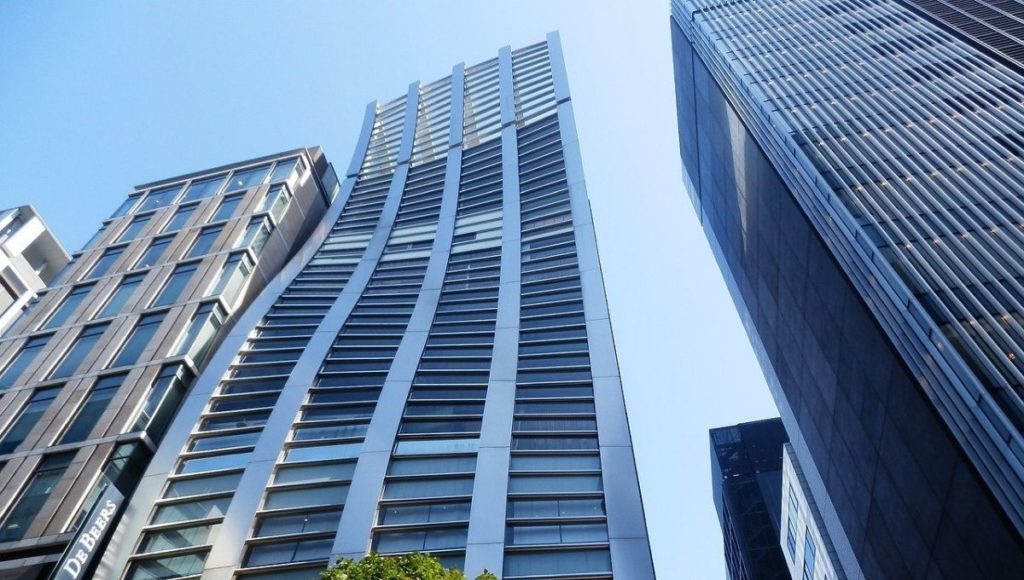
The second day of your 5-day tokyo itinerary will be a wonderful blend of tradition and modern Japan.
Shopping in Ginza is what most of the visitors visit the areas for, but there are two sides to the area. The first is modern Ginza. Brand shops lining the street and many architectural masterpieces can be found just walking along the road (for example in a tour of Ginza which you can book via Get Your Guide).
But if you have the chance, I would recommend also having a look at the more traditional part of Ginza, for example, the famous Kabuki hall where traditional Kabuki plays can be enjoyed.
Even if you don’t have a ticket (unfortunately I have never seen a Kabuki performance) the theater itself is a real sight not to be missed. If you want to see some real Kabuki you can get some tickets online.
The business district around Tokyo Station
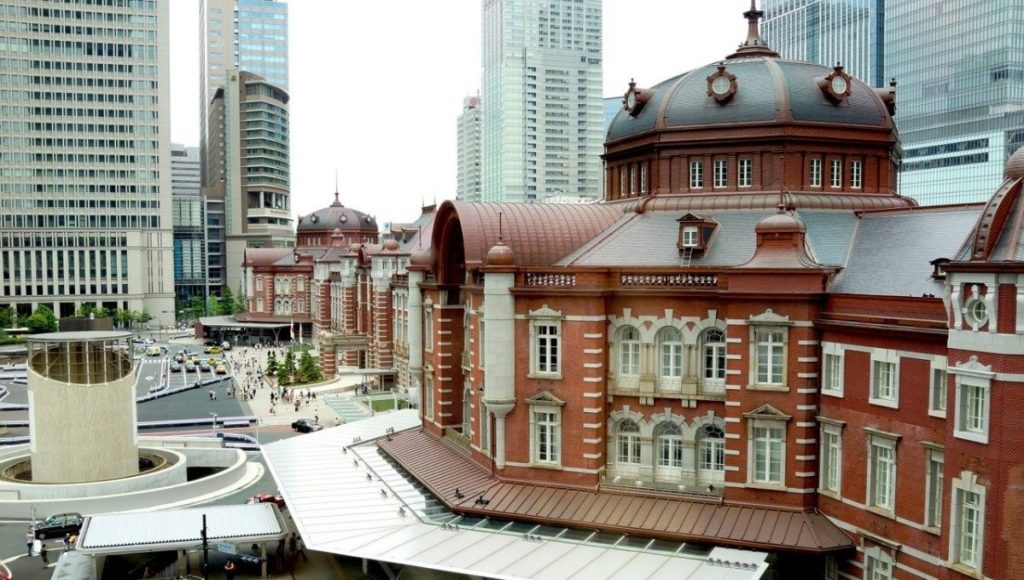
From Ginza, it is only a short walk to the business districts of Tokyo, Marunouchi. Try to get a feel for the way the Japanese people live in the capital.
The skyscrapers around Tokyo Station are mostly offices of important Japanese, but also foreign companies. You can see the Japanese salarymen and office ladies, as they are called, hurry on their way to or from work. I know this because I used to be one of them. My office was also in the Marunouchi district right next to the Tokyo Station on the 25th floor of one of the skyscrapers.
The Tokyo Station building itself is also worth a short visit. The facade of this more than 100-year-old building has recently been renovated and is a great backdrop for pictures. I especially love the contrast between the old building and the very modern skyscrapers that surround it.
Tokyo Station is quite a big station and if you are on the wrong side you won’t be able to see any of the beauty of the old station building. So better check where you need to go in advance. If you head for the Tokyo Station Hotel you are in the right place.
If you happen to be hungry while at Tokyo Station, I recommend you try some delicious Tonkatsu at one of my favorite restaurants.
The Imperial Palace
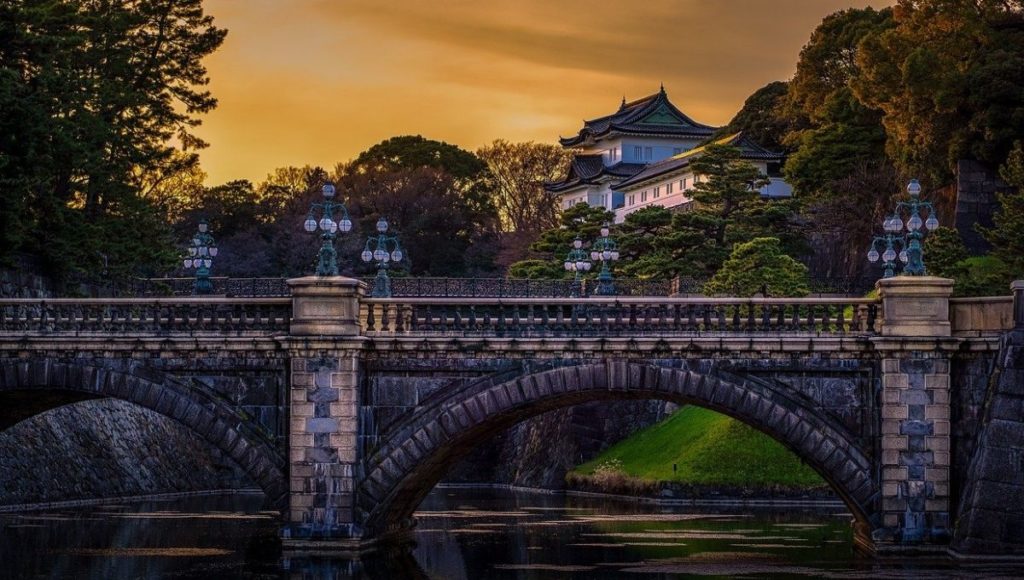
Another must-see site for any Tokyo itinerary is just a short walk away, the real heart of Japan. The Tokyo Imperial Palace, the home of the Japanese emperor. Most of the time the general public is not allowed inside, but you can try to get access to the Imperial Palace through a tour, but many tourists visit the entrance to get a picture of the famous Seimon Stonebridge.
You can also take a stroll through some of the public gardens and walk around the premises but in my opinion, there are better things to do in Tokyo.
The center of Tokyo in Nihonbashi
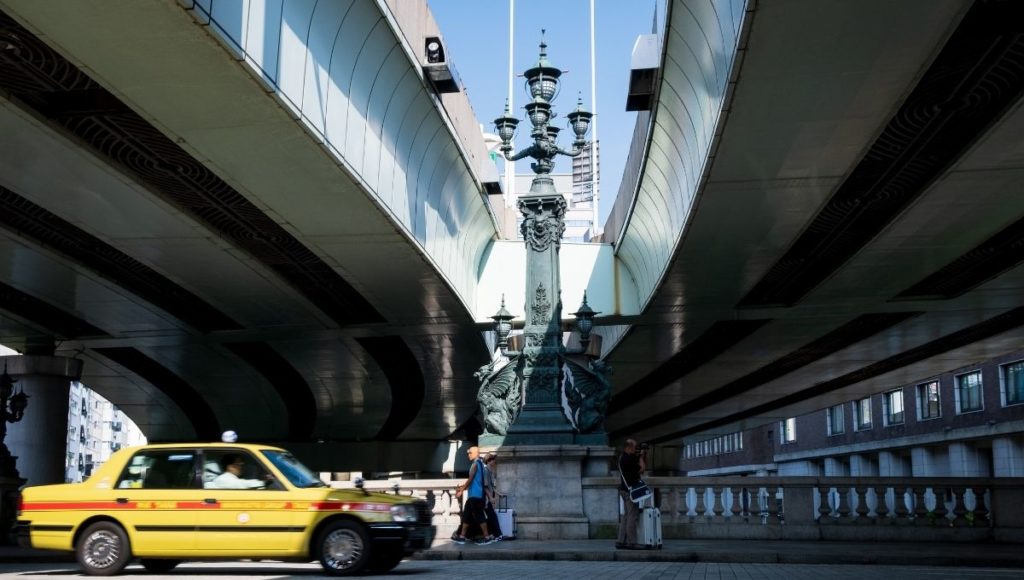
The official central point of Edo, Tokyo before it became Tokyo was the Nihonbashi Bridge. The name literally translates to Japan bridge, and while it is historically very significant, and in principle also a lovely sight, there is a highway running over the bridge with makes the whole affair a bit anticlimactic.
But no worries the Nihombashi district has more to offer than an unfortunately located bridge. There are many department stores in Nihonbashi. I suggest exploring the below-ground floors to find an assortment of delicious Japanese foods and sweets like you wouldn’t believe.
One of the most exciting things here is probably the fruit for which Japan is so famous. At department stores in Nihonbashi you can buy white strawberries, square watermelons and Japanese melons that will cost you at least 100 USD.
Another district of Nihonbashi is Ningyocho, where I used to live. Ningyocho not only has an abundance of delicious restaurants, but also a rich history and many old shops. In Edo times Ningyocho was the home of many doll makers as well as puppeteers and is also known as one of the birthplaces of Kabuki, the traditional Japanese theater. While you are there, I recommend you have dinner at Taniya my favorite Udon restaurant in all of Tokyo.
Anime and technology in Akihabara
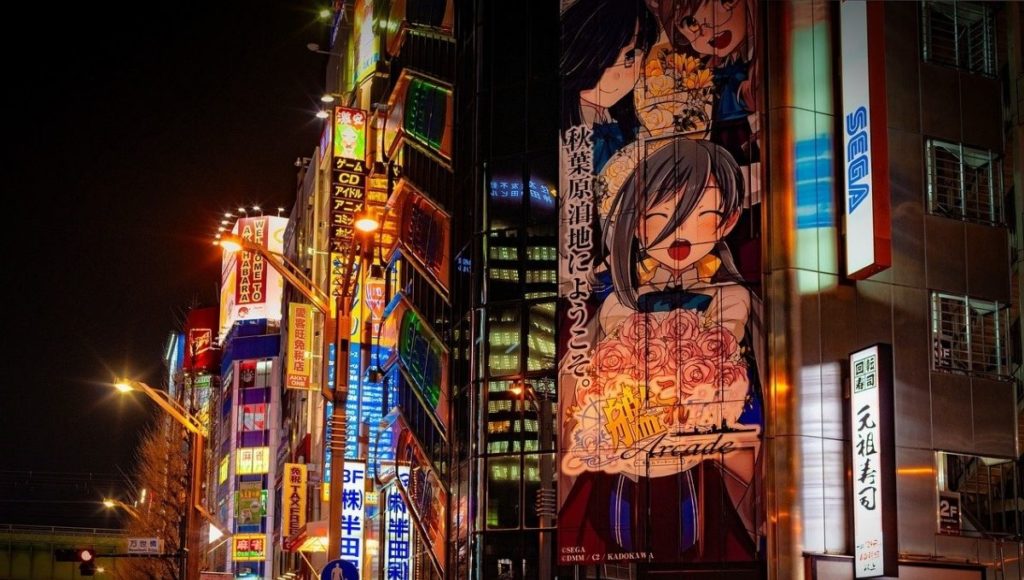
If you want to buy the latest Japanese technology or are into Manga and Anime, Akihabara is the place that every Tokyo itinerary should have.
But, if you aren’t so much into either Akihabara is a place that you can skip without regrets.
There are two kinds of buildings around Akihabara. The biggest electronic stores in Tokyo where you can buy anything you can only imagine from cameras to headphones, computers and mobile phones, but also household goods like refrigerators and air-conditioners, and of course Japanese high-tech toilets. And on the other hand shops with all kinds of products of your favorite Anime. Figurines, stickers, stuffed animals you name it, everything can be found here.
Day 3 – Asakusa, Tokyo Skytree, Ueno, Nippori, Onsen
Souvenir shopping and a temple in Asakusa
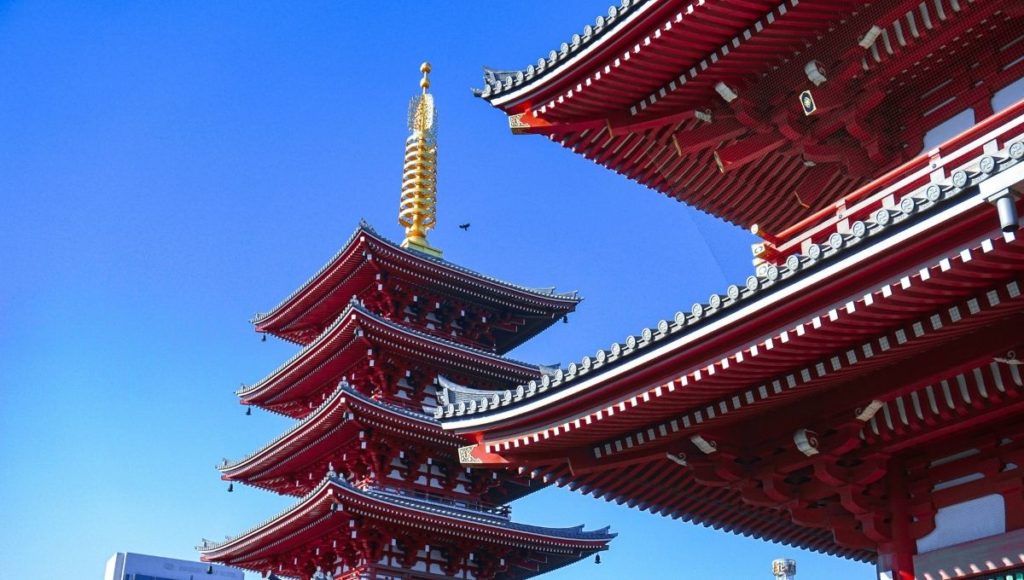
For day 3 of my itinerary, it is time to head east to Asakusa Tokyo. should be your first stop as it gets quite crowded during the day and is best explored in the morning when the shops open around 10 a.m.
The long shopping street lined with souvenir shops and food stalls leading from the Kaminari Mon (Kaminari Gate) to the main building of Senso ji temple is a great place to do all your souvenir shopping.
If you want to learn more about Senso ji temple and other Shrines and Temples in Tokyo you might be interested in a Temples & Shrines Morning Tour or just tour Asakusa comfortably in a traditional Japanese Rickshaw.
It is also an excellent chance to try some Japanese sweets and other foods like rice crackers or Japanese soft serve ice cream.
See Tokyo from the top at Skytree Observatory
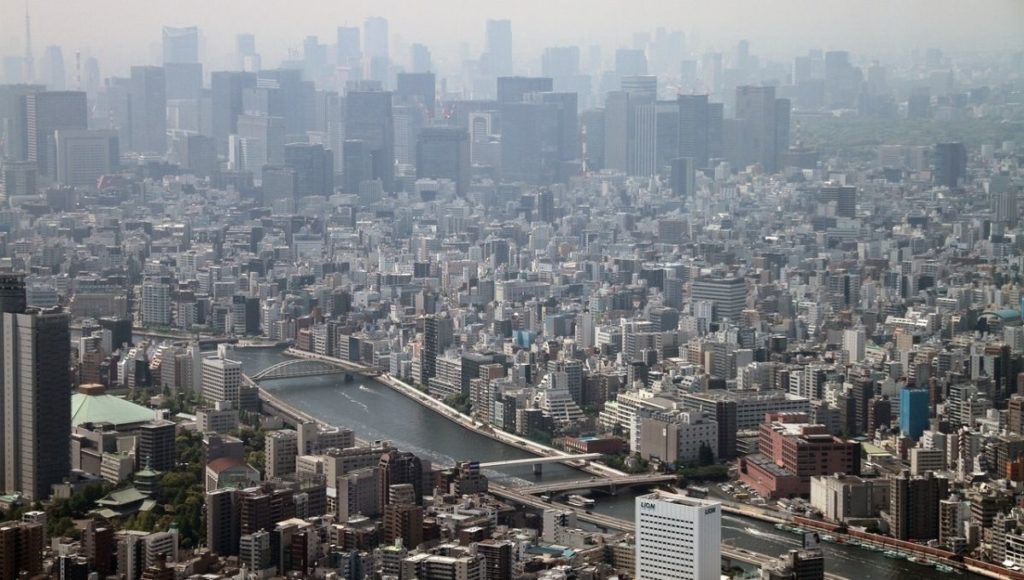
If you wanted to, you could take a train to the Tokyo Skytree from Asakusa. The 634 meter high Tokyo Skytree is the tallest building in Tokyo.
The lower floor of the Skytree building is a shopping mall, aquarium, planetarium and also office building.
At the height of 350 and 450 meters are the two observation decks from which you will have an unforgettable view of the city (or so I have been told, having never been to the decks myself). The reason I have never been to the top, although I have visited the Tokyo Skytree before is the price and the long lines.
If you want to ride to the top, I suggest you get a ticket in advance.
Ameyokocho and Ueno Park
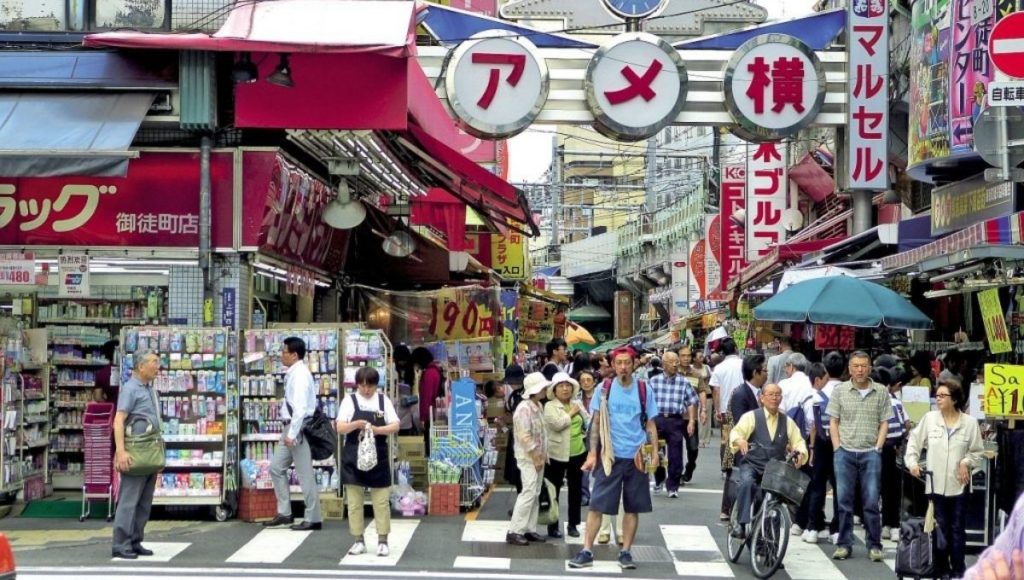
Around noon it is time to make your way to Ueno station. One of the most interesting and at the same time un-Japanese places in Tokyo is Ameyokocho. This shopping street in Ueno features many shops with cheap knock-offs of brands, and you will get cheap T-shirts, belts, and bags as well as perfumes. But there are also small stalls selling Japanese products such as sweets and crackers but also fresh fruit and fresh fish.
Every couple of steps you will stumble upon a dirty-looking restaurant selling cheap Japanese beer and small dishes to complement it. If you are still looking for a place to have lunch, this is a very authentic opportunity to experience Japan at it’s finest, or dirtiest, depending on how you want to look at it.
After the hustle and bustle of Ameyokocho take a stroll through Ueno Park. This park houses many interesting art and science museums, including the National Museum, and also the Ueno Zoo, one of the oldest zoos in Japan and one of the only places to see a Panda in Japan.
Glimpses of the old Tokyo at Yanaka Ginza in Nippori
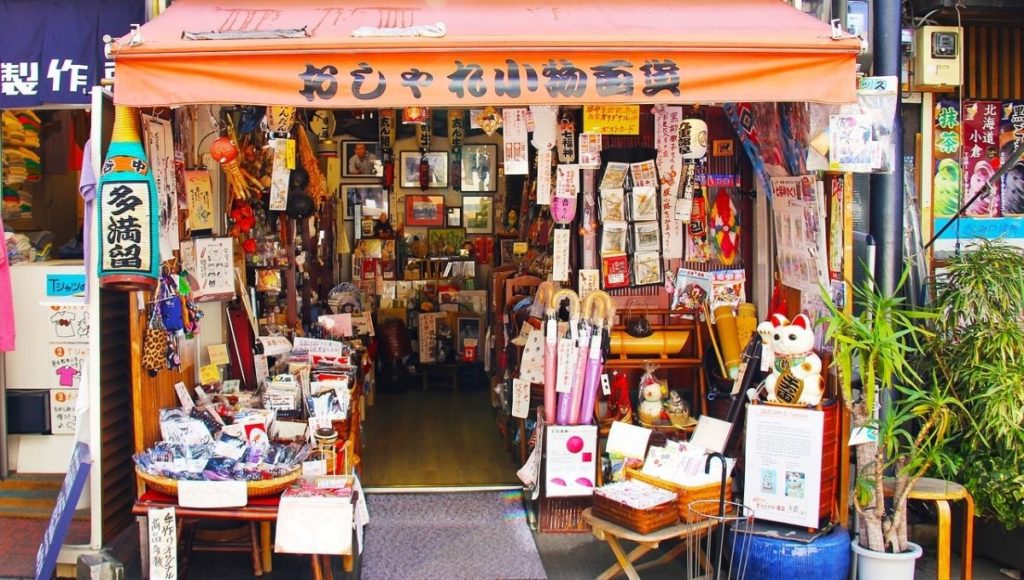
Most of the places to visit in Tokyo are super modern. Tokyo is built and rebuilt at a pace faster than anywhere else. Old buildings are knocked down to make space for ever higher buildings. Sometimes it is tough to see the historical place that Tokyo is.
One of the places in Tokyo where you can at least get a glimpse at how Tokyo must have been 50 years ago in the quaint little area of Yanaka Ginza.
This laid-back little shopping street not far from Nippori Station and should be included in your itinerary. It has a real shitamachi (old town) charm that is lost in many of the more modern districts of Tokyo. You can shop for all kinds of cheap things like clothing, toys or food items or just watch the locals go about their daily business.
Take a bath in a Japanese hot spring
If you want to experience another aspect of Japanese culture, your last stop of the day should be Somei Onsen Sakura in Sugamo. After a long day of walking it is the perfect place to relax. The public bath fed with Onsen water features multiple indoor and outdoor pools of different temperatures.
It is especially beautiful in spring when the Sakura trees on the property are in blossom, but at any other time of the year, it is still a beautiful oasis in the middle of a hectic metropolis and in my opinion one of the most beautiful Onsen in Tokyo (but not the only one).
It is only a little walk from Sugamo Station which you can reach on the Yamanote Line. Find more information about Somein Onsen Sakura in the box below.
Name: Tokyo Somei Onsen Sakura (東京染井温泉 SAKURA)
Price: 1296 Yen (13 USD)
Hours: 10 a.m. – 11 p.m.
Address: 5-4-24 Komagome, Toshima-ku, Tokyo
Day 4 – Kamakura day trip
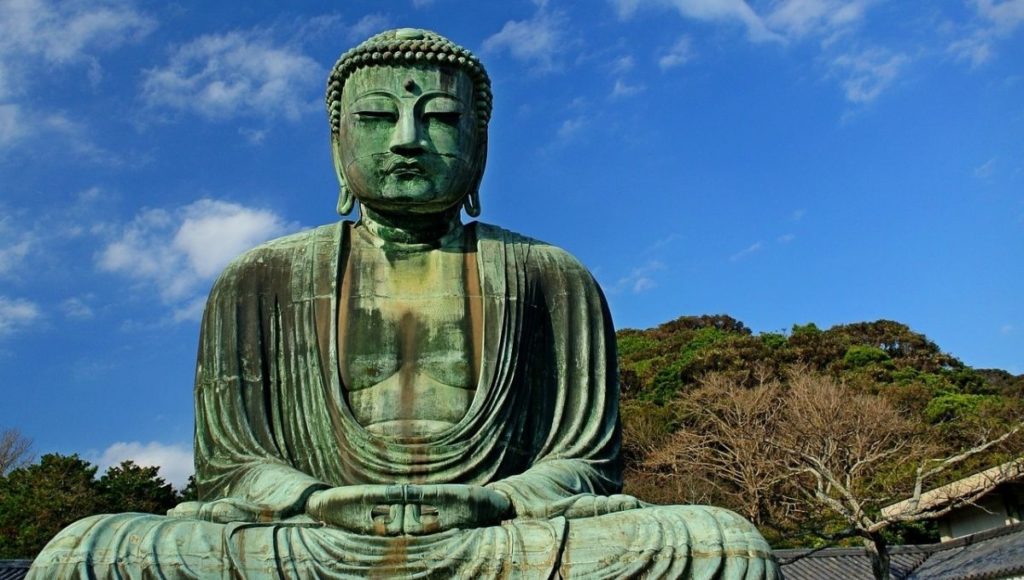
Whenever I’m visiting a city for 4 or more days, I will almost always take a little day trip somewhere in my itinerary. Cities are amazing cultural melting pots, but often to discover a bit of authenticity, it is great to get out and about. Even better if you can do it using public transport.
Since you only have 5 days in Tokyo the one-day trip outside Tokyo I recommend is to Kamakura. Known as little Kyoto, it will give you a better glimpse into the culture and history of Japan.
If you want to take this trip, you can read my full one day guide to Kamakura with a full itinerary and transportation information, but I’ll give you an overview of the highlights here.
But, there are many more fantastic day trips out of Tokyo, and if you ever have a chance to come back to Tokyo, I highly recommend you do a couple of them. For example, a day trip to view Mount Fuji is an unforgettable experience or even explore the Fuji Five Lakes area.
For now, let me tell you what to expect from a day trip to Kamakura. The below activities are only the highlights of Kamakura and I recommend you read the full blog post about Kamakura once you are done with this post where I share helpful details about getting there and suggested sights to include in your itinerary.
- Great Buddha of Kamakura in Japan – The big bronze Buddha statue was constructed many hundreds of years ago and is a sight to behold. You can even visit the inside and learn about the construction of the Buddha statue.
- Hase Dera Temple (長谷寺) – Hase Dera Temple has everything you might wish of a Temple in Japan. Beautiful gardens, a great view, traditional buildings and even some caves. If you only want to visit one Temple while you are in Japan, this is the Temple to see.
- Bamboo Forest of Hokokuji Temple – This little bamboo forest is like a separate world, everything is cooler, noises don’t seem so loud and you can hear the birds singing. A stroll through the bamboo forest of Hokokuji Temple is a beautiful experience not to be missed when you are in Kamakura.
- The Tsrugaoka Hachimangu Shrine – The Tsurugaoka Hachimangu Shrine is the most important shrine in Kamakura. It was founded in 1063, it is an important shrine for warriors and especially the Minamoto family who founded it when Kamakura was the capital of Japan.
- Visit the beach – About 1 kilometer from Kamakura Station is Kamakura beach. During the summer months, you can lie on the fine sand or take a dip in the water. There are also many bars and restaurants where you can either enjoy a cold drink, or a Japanese style shaved ice.
Getting to Kamakura is easy. From Tokyo Station take the Yokosuka Line to Kamakura Station. This will cost you 920 Yen (9 USD) and take just under one hour.
In Kamakura, you can walk to many destinations. Alternatively, you can also take the Enoshima Dentetsu Line called Enoden. I recommend this for your visit to the Great Buddha and Hase Dera. The station to get off is Hase Station.
To get directly to the bamboo forest of Hokokuji Temple it is best to take a bus from Kamakura Station. But my recommendation is to walk and explore all the little Shrines and Temples on the way.
Day 5 – Ryogoku, Korakuen
Learn about Sumo and Japanese history at Ryogoku
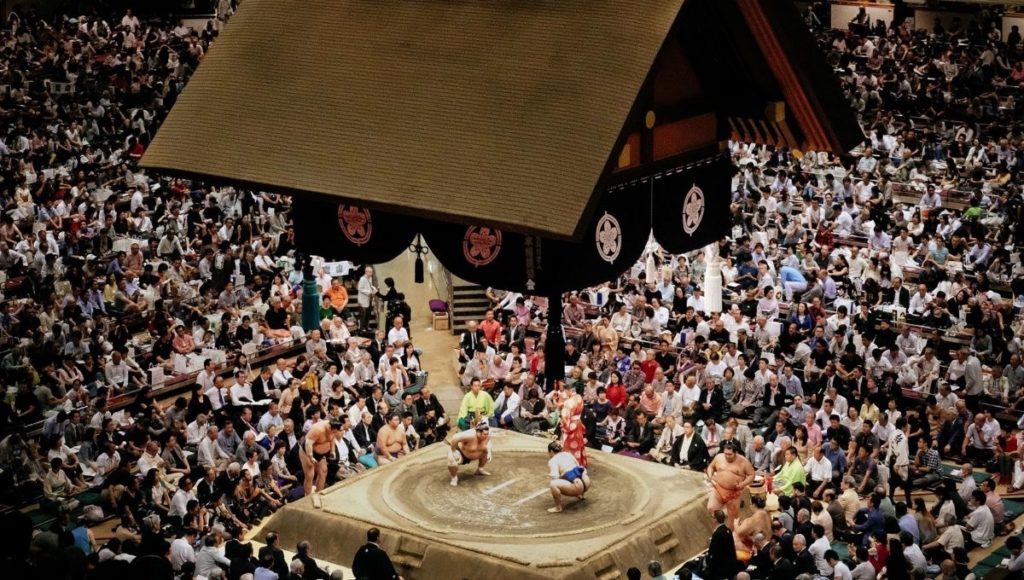
The final day of my 5 day tokyo itinerary is all about culture and history, and hopefully an opportunity to see a sumo wrestler, another one of Japan’s most iconic highlights.
The place where you are most likely to see a Sumo wrestler is in the Ryogoku area of Tokyo. Sumo wrestlers are easily spotted because even when they are out and about in private, they are required to wear traditional clothing, and their long hair is artfully draped on their heads.
Many Sumo wrestlers are very friendly and they won’t mind you taking a picture of them. But to be polite, please ask them before you take a photograph.
There are many interesting aspects of Sumo that you can experience. If you are keen to watch a real sumo match you can easily buy some tickets in advance online. But you can also have a more close-up and hands-on experience by visiting a Sumo stable or participating in a Sumo experience.
The Sumo wrestlers have to put on a lot of weight and muscles to become strong. One way they do this is by eating Chanko Nabe, a kind of hot pot with many ingredients. Around Ryogoku there are many restaurants where you can try this very delicious dish in a traditional setting.
But you can not only learn about Sumo in Ryogoku, but the famous Edo Tokyo Museum is also located there. The museum has been recently renovated, and if you are interested in Japanese history, the Edo Tokyo Museum is one of the most excellent places to learn.
You start your tour of Tokyo’s history by walking over a replica of the famous Nihombashi bridge, after which you get to see many interesting exhibits of history through the ages. There are volunteer guides who can give you a lot of additional information in a variety of languages.
Name: Edo Tokyo Museum (谷や)
Admission: 600 Yen (6 USD)
Opening hours: 9:30 a.m. – 5:30 p.m
Address: 1 Chome-4-1 Yokoami, Sumida-ku, Tōkyō-to 130-0015
Drink Japanese matcha and enjoy Japanese landscaping at Korakuen
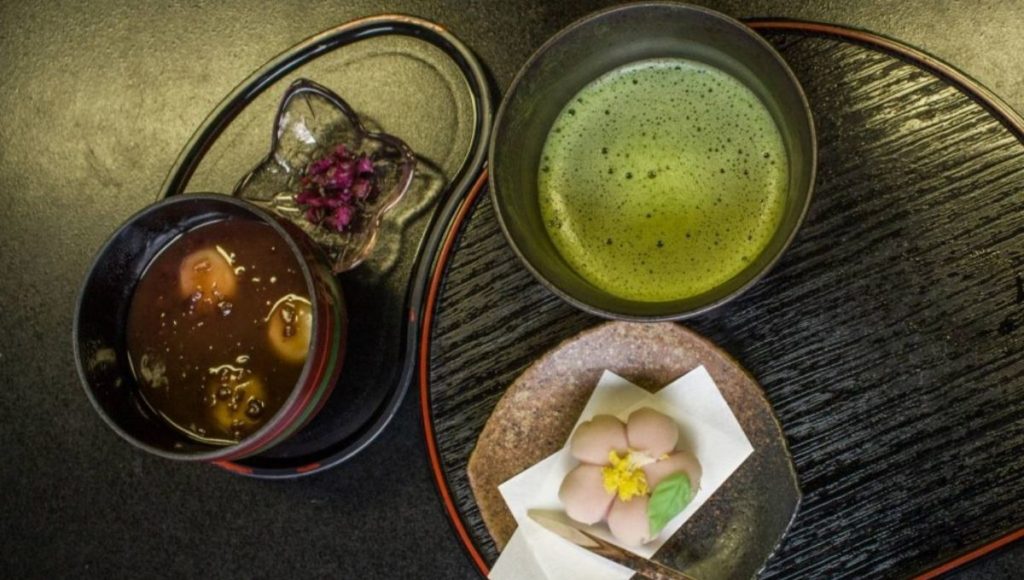
The last thing that might be missing from a perfect Tokyo itinerary is a visit to a Japanese garden and a visit to a Japanese tea house.
You can kill those two birds with one stone in Korakuen. This Japanese garden features a pond and other parts of typical Japanese garden architecture.
Name: Koishikawa Korakuen Garden (小石川後楽園)
Admission: 300 Yen (3 USD)
Opening hours: 9 a.m. – 5 p.m.
Address: 1 Chome-6-6 Koraku, Bunkyō, Tokyo 112-0004
After your stroll, take a rest at the tea house Kantokutei Mitoya right outside the gate of the garden. I recommend ordering a Japanese tea with sweets set.
The Japanese tea, made from matcha green tea powder is quite bitter and tastes especially delicious if you enjoy it with the beautifully crafted Wagashi, a Japanese sweet made from sweet bean paste.
Name: Kantokutei Mitoya (涵徳亭美都屋)
Opening hours: 12 p.m. – 4 p.m. and 5 p.m. to 8:30 p.m. (closed irregularly)
Address: 1 Chome-6-6 Kōraku, Bunkyō-ku, Tōkyō-to 112-0004
A few additional suggestions
So there you have my 5 day tokyo itinerary. Of course, it doesn’t;t quite cover everything as there are far too many experiences to fit into Tokyo in 5 days. Here are a few suggestions that I haven’t talked about but are famous Tokyo highlights and could be bolted on to any day. Alternatively, you could combine them into an additional day if you didn’t fancy taking a day trip as I have recommended for day 4.
Tokyo Tower
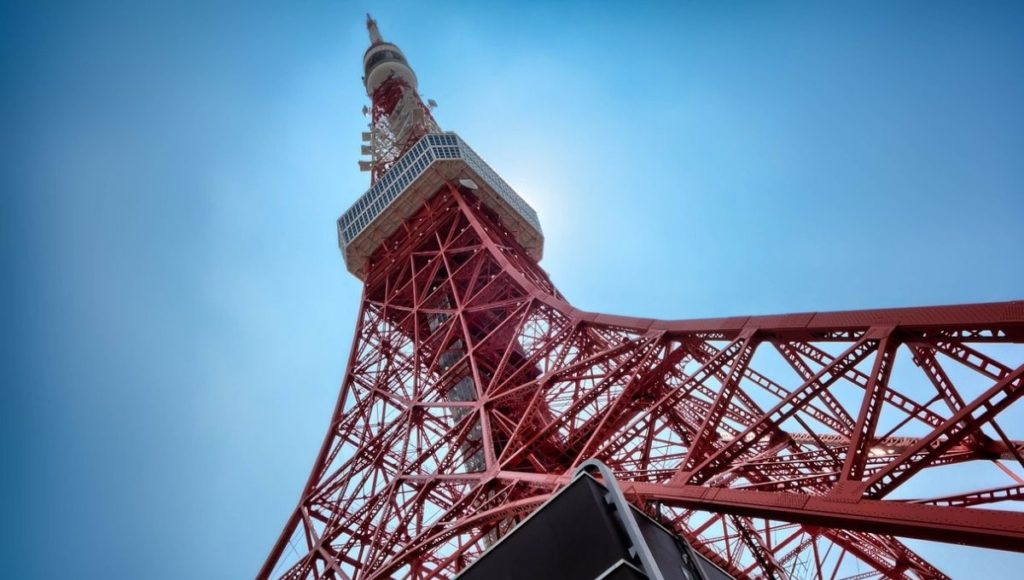
The Tokyo Tower is probably one of the most iconic structures in the city, visible in most photos of Tokyo. The tip of the tower reaches 333 meters into the sky with an observation deck half way up. To get there there is an elevator, or if you are brave, 600 steps. A popular attraction is the glass floor to look straight down onto the street below.
A bit further up, at 250 meters is the top deck. Reopening after a renovation in 2018, it features weird ceiling mirrors and cool lighting to give a kind of spaceship vibe but also costs a little bit extra to get to the top.
Tokyo Metropolitan Government Building
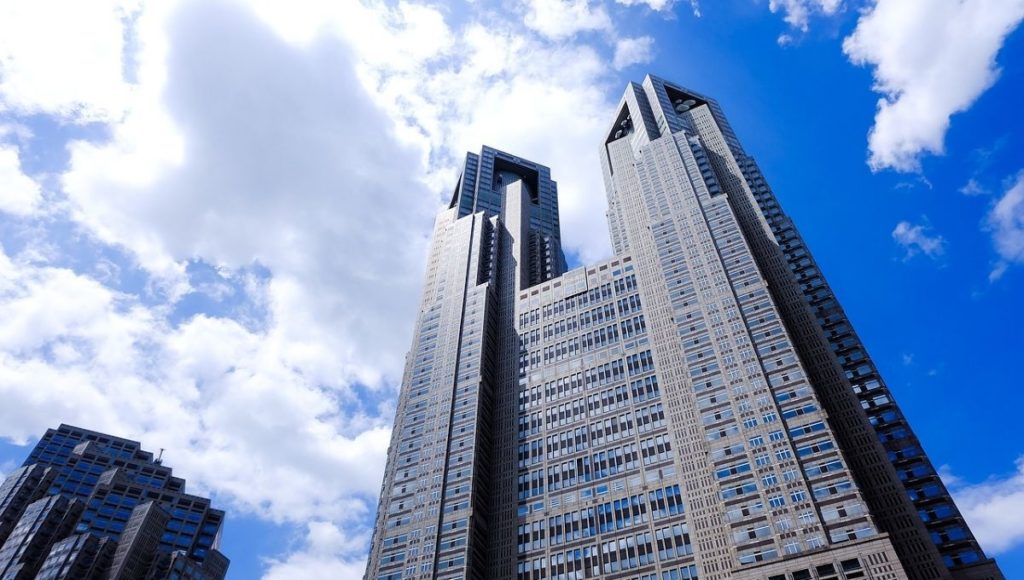
The 243 meter tall Tokyo Metropolitan Government Building is a favorite among tourists for the free observation decks, one in each tower, with wonderful panoramic views of the city. On a clear day, you can see iconic landmarks such as Mt Fuji, the Tokyo Tower and the Meiji Shrine. The building also has a tourist information center on the second floor. Just be aware, as with free attractions. At peak times there will be queues.
Shinjuku Gyoen National Garden
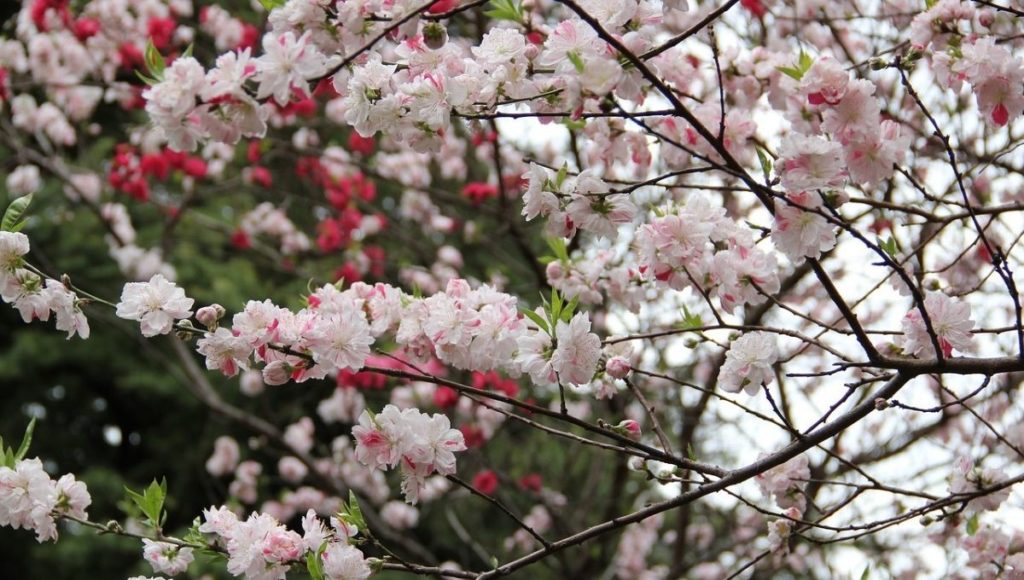
One of Tokyo’s largest and most popular parks, Shinjuku Gyoen located just a short walk from Shinjuku Station. It is made up of three types of garden:
- A traditional Japanese landscape garden with many ponds and bridges
- A formal French garden immaculately arranged and symmetrical with an overload of roses
- The English garden with wide-open lawns and cherry blossoms
There is no doubt that Shinjuku Gyoen is among the best places to see cherry blossoms in Tokyo in the springtime.
Shinjuku Golden Gai
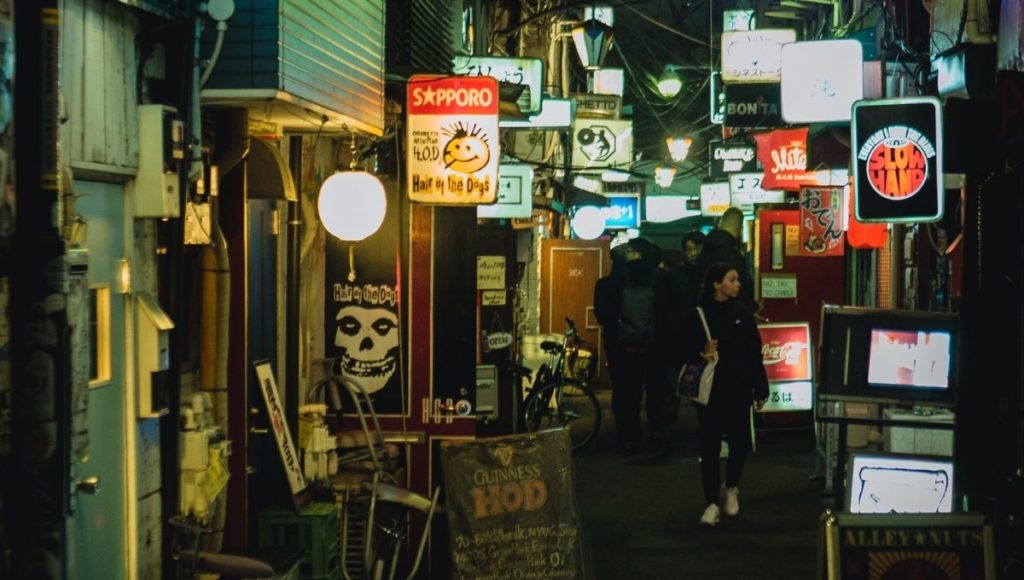
Located in Kabukicho, a famous entertainment district in Tokyo best known for adult-oriented nightlife and the iconic robot restaurant, the Golden Gai is a popular destination and worth a visit for those on the hunt for nightlife.
Over 200 small, shanty-style bars are squeezed into a network of 6 narrow alleyways. These alleys are joined by even narrower passages that you can just about fit a single person down.
Some of the small bars do not welcome tourists, preferring to keep their few seats open to locals, so don’t feel down if you are turned away, just head to the next one and try again. If you see an English menu, it’s a clue that you should be fine. Beware that some will also charge a cover fee, but this is usually marked pretty clearly on the doors.
If you would love to experience the Golden Gai, but feel a little out of your comfort zone, I’d recommend hiring a local guide who will ensure you see the best spots and have an amazing time with no worries about getting lost.
Teamlab Borderless Digital Art Museum
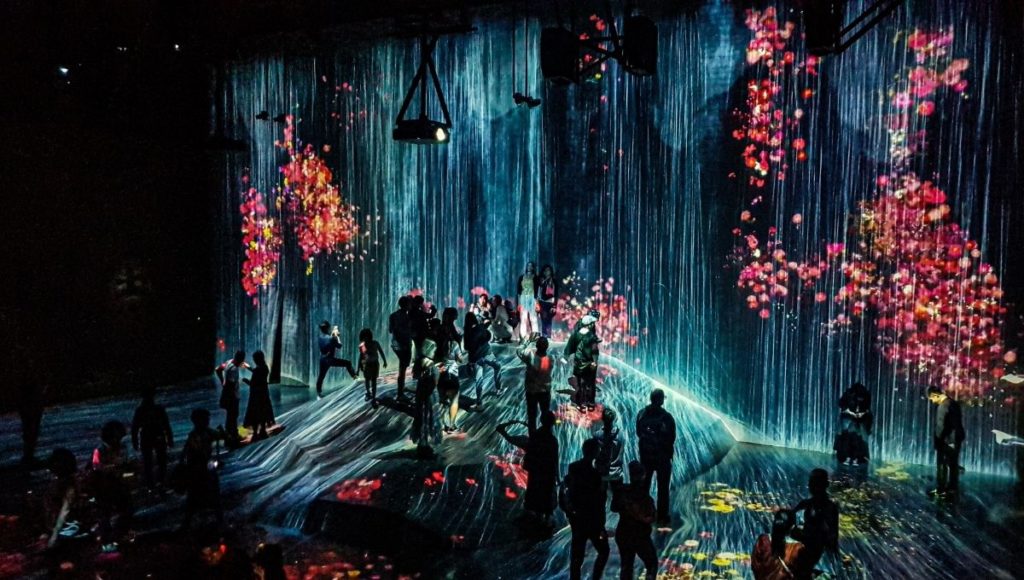
Located on the other side of the Rainbow Bridge, in the Mori Building in Odaiba, is the world’s first Digital Art Museum created by the TeamLab art collective made up of animators, programmers, architects, mathematicians and designers.
It is an incredible audio-visual experience, unlike anything you will have experienced before. Over 500 computers and 470 projectors set up in specially created rooms bring interactive art exhibits to life right before your eyes in a fantastic, immersive experience.
How to get around Tokyo
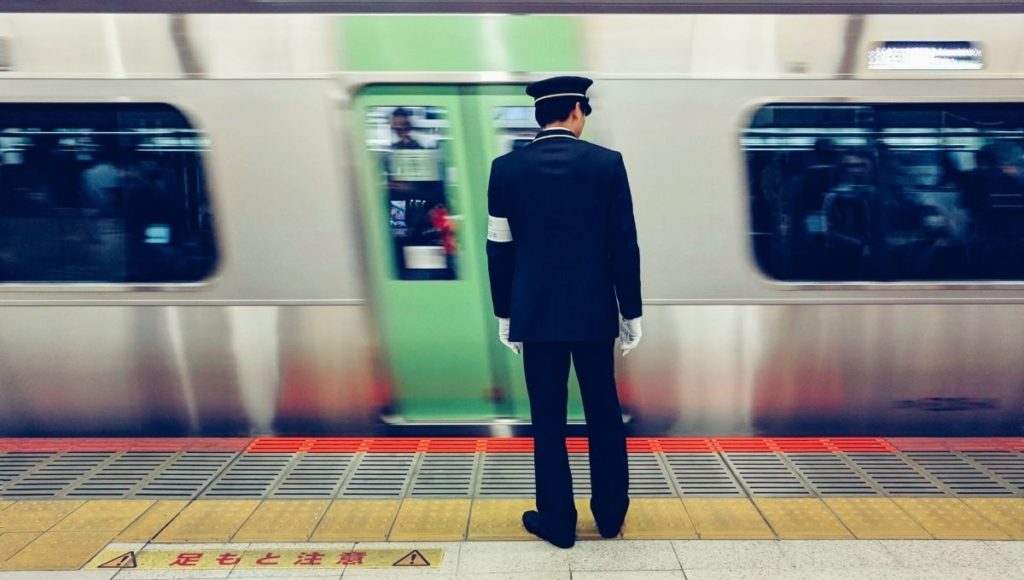
Once you get used to it, it is relatively easy to get around Tokyo using the public transport system. Simply use the Metro and JR trains.
I recommend you buy a PASMO or SUICA card, similar to the top-up cards in London or other big cities.
These cards are very convenient because you won’t need to buy a separate ticket everywhere you go.
The card will cost you nothing, just 500 Yen (5 USD) deposit that you will get back once you return the card at the end of your 5 days in Japan. Using a PASMO or SUICA card is also a couple of yen cheaper than using a standard paper ticket.
I use Google Maps to find my way around Tokyo. It is super convenient as it includes all the information you might need: The road to the closest station, what time the next train leaves, where you have to change trains and also how much your ride will cost you.
Another tip. If you want to use your phone conveniently, and you don’t have an international data plan, then you can hire a WIFI router for your trip online via Get Your Guide for as little at $5 per day!
From Narita Airport
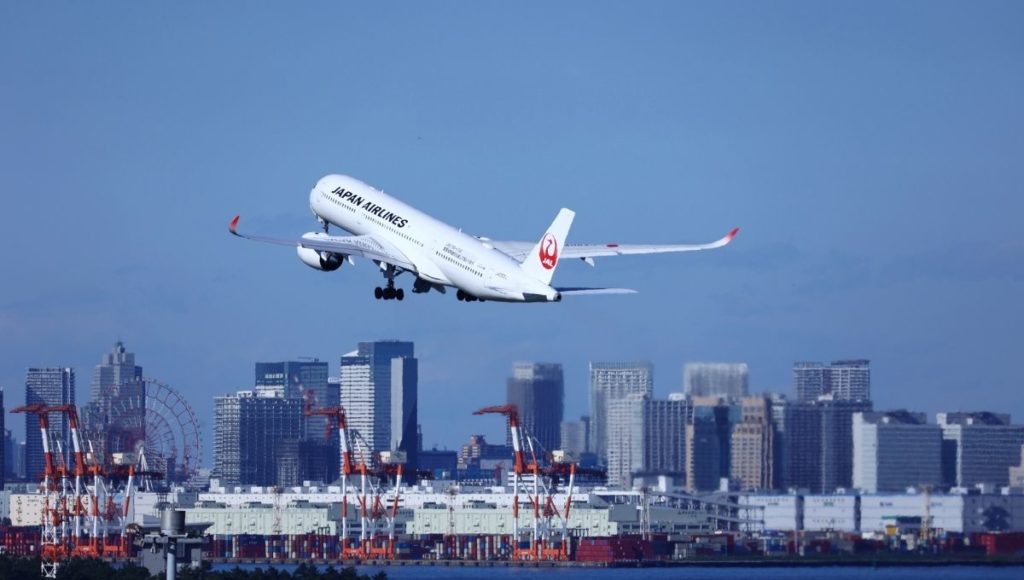
Narita is the bigger of the two Tokyo airports. Unfortunately, it is also quite a distance away from the city center. It lies in the east of Tokyo about 70 kilometers in a smaller city called Narita, which incidentally makes for a nice day trip before your flight.
There are four primary ways to get into the city: Taking the Narita Express or Nippori Liner are the fastest but most expensive ways to get into the city.
There are also shared shuttle service companies that offer a ride to your hotel or a destination of your choice. A little bit pricy but very convenient.
Alternatively, you can take a bus to many destinations in Tokyo, which is a little bit cheaper but takes about an hours or more.
The slowest but cheapest way is to ride a standard train.
No matter what you do, don’t take a Taxi into Tokyo. The taxies in Japan aren’t cheap and you will have to pay around 30.000 Yen (300 USD) for your trip. Yes that’s right 300 Dollars, that’s not a typo.
In case you arrive in the middle of the night you will have trouble getting into the city, because busses and trains usually don’t operate between 12 a.m. and about 5 a.m. I suggest you wait it out at the airport.
From Haneda Airport
Haneda Airport is much more convenient for your Tokyo trip because it is much closer to the city than Narita Airport.
You can either take a bus or a regular train to get to your destination within the city in under 30 minutes.
Since it is the smaller airport there are less international flights, but in recent years there has been an effort to have more flights come in through Haneda, and you might be lucky, so make sure to check.
If you want to know more, be sure to read my post about traveling from Japan’s two airports to the city centre.
Getting around Japan
If you are planning on venturing outside out Tokyo to destinations like Kyoto, Hiroshima, Fukuoka then you might want to consider buying a Japan Rail Pass.
You can to buy your Japan Rail Pass before you arrive in Japan or when you have already arrived in Japan and you can do it conveniently online by following the link in this paragraph. If you want to find out more about the Japan Rail Pass read my full post about it.
In case you only plan to visit Tokyo you don’t need a Rail Pass.
Where should a first-time tourist stay in Tokyo?
In Tokyo, there are countless options for accommodations. And because it can sometimes be a little bit overwhelming let me just pick up some different and interesting ones.
The best area to stay in Tokyo
If you are planning on staying at a hotel, I suggest you stay somewhere very central in Tokyo, because you won’t want to spend your trip to Tokyo, Japan sitting on a train. The area I recommend is Ningyocho, one of the best areas to stay in Tokyo (that’s just my opinion).
Maybe I am biased because I used to live there, but hey, there is a reason I chose to live in that neighborhood, and it is not the low rental prices, trust me.
If you are looking for budget hotel recommendations, a very nice hostel I have stayed at previously is Sakura Hostel Asakusa. It lies very conveniently close to the attractions on day 3.
If you are looking for something more traditionally Japanese, then a Ryokan I stayed at in Ikebukuro might be of interest to you. It is called Kimi Ryokan and is beautifully Japanese with Tatami mat rooms where you sleep in a Japanese Futon bed. Book your stay at Kimi Ryokan now!
Stay with locals in Tokyo
I don’t get tired of saying this again and again, so here it is. If you have the chance stay with a local while you are in Japan take it. There are different options to stay with locals. You could try finding a Couchsurfing host.
There are also countless Airbnbs in Tokyo. Just be careful that the Airbnb is operated legally. To be safe always read the comments from previous guests and better not stay anywhere that doesn’t have any reviews yet.
Another option is homestay.com a website that connects you with host families in Tokyo and everywhere else in the world. There are more than 20 hosts available in Tokyo and you will have an amazing, unique and unforgettable experience you cannot have if you stay at a hotel. Trust me.
FAQs
How much money do you need for 5 days in Tokyo?
It’s very hard to say as it completely depends on how much you want to do. An average budget would be around $125 – $150 per day to cover food and fun, but of course, this can be stripped back to around $65-75 if you are on a budget by eating cheap and not visiting so many attractions.
Is Japan friendly to tourists?
Yes! Japan is a welcoming country and most people are friendly, polite, and courteous. Just remember to return the favor by being polite and respectful in return. When in temples and sacred sites, research, and codes of conduct before visiting and adhere to them.
Do they speak English in Tokyo?
A large number of people in Tokyo will speak some English, especially in places geared towards tourism. You’ll also find bilingual signs on the Tokyo Metro, JR Lines, and in tourist areas like Shinjuku and Asakusa.
Is it safe to walk around Tokyo at night?
Yes, Tokyo is a safe city, but as with any city, there is always a slight risk. As long as you are sensible and don’t go looking for trouble, the chances of any trouble finding you in Tokyo are very slim.
Is Tsukiji Fish Market still worth visiting?
The Tsukiji Fish Market is in pretty much every guidebook about Tokyo and has been a hugely popular tourist destination. It was home to the famous tuna auction and one of the biggest fish markets on the planet. But in October 2018, it was shut for good and moved to the new Toyosu Market on the outskirts of Tokyo. However, although the market has gone, if you have an interest in sushi, seafood, or cooking, the Tsukiji Outer Market should still be considered for your Tokyo itinerary. It is a small area made up of pokey little shops and still retains much of the character that made it so famous around the world.
Tokyo Tower VS Tokyo SkyTree: Which is better?
Tokyo SkyTree is the more modern of the two and located in a great shopping area, so if you want to combine the two, it’s perfect. However, the Tokyo Tower is a more iconic destination. If I were to pick one of the two, I’d have to side with the SkyTree, it’s just that bit more modern and quite a bit higher, but both are great. On a clear day, they both offer views of Mt Fuji.
5 day Tokyo itinerary: Final thoughts
I won’t say I know everything there is to know about Tokyo but after 3 years of living here, I know my way around.
There are not many countries that are famed so much for their traditions, but also how modern and futuristic they are at the same time. I have crafted this 5-day itinerary so you can enjoy a fantastic blend of both traditional sites and activities contrasted by modern Japan that we know today.
If you have any question whatsoever please don’t hesitate to ask in the comments or if you have any other recommendations, I’m sure the readers would love to see them too, so let us know.
[starbox]
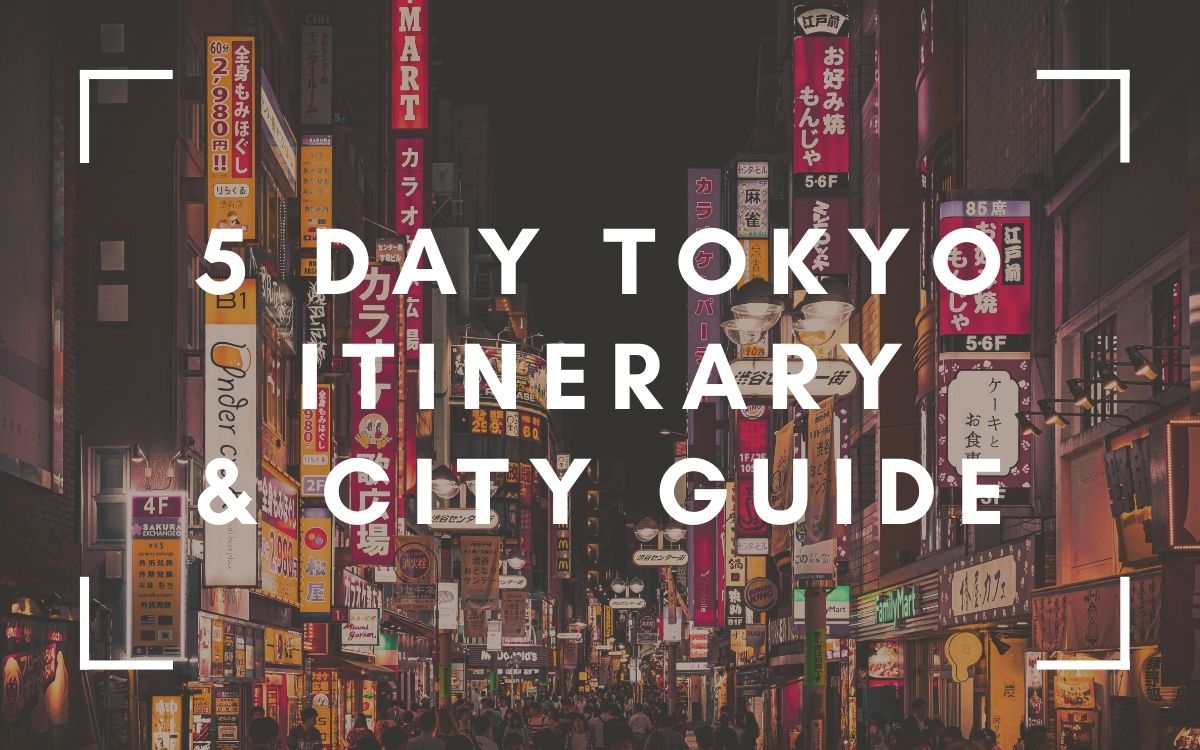
Hello
I’m going to Tokyo 7/8-7/13
Then to Yokohama 7/13-7/14
Staying at park Tokyo then Hyatt regency
Flying into Haneda
Would love specifics for days-things to do, places to eat, nightlife, how to get there w/ routes
Thanks
Hi Stacy. I’m not sure I’d be best placed to advise in that much depth. I reached out in the community and can recommend a couple of other bloggers that may be able to help you.
Helen Foster has a Japan site and FB group that aims at first time travelers. https://Japlanease.com. She also recommended a couple of other sites, The Navigatio and, for smaller places, there’s a site called Visit Japan Vegetarian which covers way more than the title says.
Also Brandon has a site not specific to just Japan, but lives there so most posts are on Japan. https://zimminaroundtheworld.com
Hope this helps and have a great time 🙂
What a great article! Lots of excellent tips here for people. I hope I may leave my own? To enter most of Tokyo’s parks, as well as an entry fee, you need to present a numbered ticket. You can book those on the internet through the park’s website.